
Arthrosis is a disease of the joints, considered to be dystrophic and associated with the slow destruction of cartilage inside the joint.With arthrosis for a long time there are changes, restructuring of the joint ends of the bones, the inflammatory processes are underway and the degeneration of the periodic tissues occurs.Similar to "arthrosis" includes a not very large group of joint diseases with degenerative-inflammatory nature, which have various causes and similar mechanisms of their development.
Arthrosis is considered to be the most common joint disease in the world, according to statistics to one degree or another, up to 80% of the globe population suffer from arthrosis.The turnover of this type is very common and are third, after oncology and cardiovascular disease.
The likelihood of developing arthrosis with age increases many times.The disease is equally affecting both men and women, the exception is only arthrosis of the inter -phalax joints, as it is most commonly seen in women.Arthrosis is ahead of people of working age - from 30 years and every year the number of sick people is constantly and constantly increasing.
The causes of arthrosis
Arthrosis develops due to metabolic disorders in the joint, which in turn leads to the fact that cartilage begins to lose elasticity.This can be facilitated by complete or partial loss on the cartilage of the proteoglycans, this happens as a rule due to quite deep cracks in the cartilage itself.The loss of proteoglycans can occur for another reason: due to the failure of their joint cell production.
The following causes may affect the onset and development of arthrosis:
- Preliminary injuries.This can be dislocations, bruises, fractures, connections and other damage.
- Metabolic disorders.
- Excess body weight, which leads to additional joint loads.
- The inflammatory process in the joints is acute purulent arthritis.
- Old age.
- Low quality of power.
- Hypothermia.
- Autoimmune diseases - red lupus, rheumatoid arthritis.
- General intoxication of the body.
- Common colds.
- Specific inflammation - syphilis, tuberculosis, tick encephalitis, gonorrhea.
- Thyroid disease.
- Blood coagulation disruption (hemophilia).
- Pertes disease is a disorder of the blood supply to the femur head.
Also, at risk, in the near future, such a disease as arthrosis are people whose professions are: Freemason, Miner, Fisherman, Kovacs, Metallurgist - and other areas of activity related to increased physical labor.
Symptoms of arthrosis
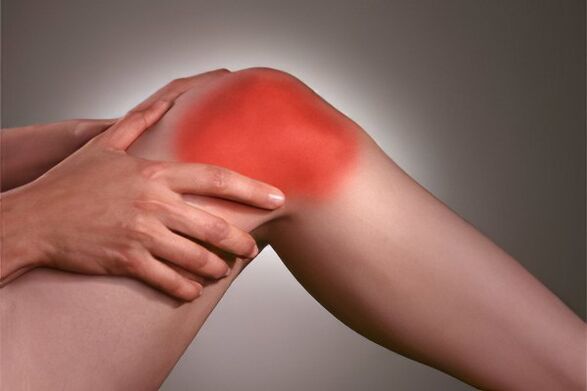
Symptom of arthrosisThere is pain in the joint of the joint, which disappears when the joint at rest;Reduction of joint mobility, crunching, the feeling of muscle tension in the joint.The joint, influenced periodically by arthrosis, can swell and deform over time.
Consider the following 4 large groups of symptoms of arthrosis:
- Pain.The presence of pain is the first sign of arthrosis of the joints.It can be assumed that with any disabilities such sensations occur, but with arthrosis, pain has some characteristics.First, this is the appearance of sudden pain or significant discomfort during movements.It will be located at the place where the inflamed joint is located.When a person stops the movement and enters a state of rest, the pain passes.At night, one practically does not experience unpleasant sensations, unless during a coup of the body, finds the optimal position - the patient calmly falls asleep.The pain occurs during rest only at the stage of progression of the disease, they have some similarity to the tooth bastards when one cannot fall asleep.They appear closer to the morning - at 5 o'clock.So at the beginning of the pain there is virtually no pain, it can only be felt with load or palpation, over time the suffering of a person intensifies and the joint requires more and more periods of rest.Then life completely becomes torture - hyaline cartilage is thinned, the bone is exposed, the osteophytes begin to grow.Acute pain is tormented almost constantly, intensifying even more in bad weather and full moon.
- Crick.An equally indicative symptom of arthrosis is the presence of a crunch.It becomes sound due to the fact that the softness of bone rotation in the joint is reduced, they are rubbed for each other, resulting in a characteristic sound.One can hear crunch with other diseases and even when the joints are healthy.But it is such a crunchy different from its "dry" sound.The more the disease progresses, the more the sound becomes.In addition, if a crunch is heard, then pain will be felt.It is possible to distinguish the sound released from the joints with arthrosis from the usual harmless click.
- Reducing joint mobility is another characteristic symptom of arthrosis.At the initial stage, this phenomenon does not bother the patient, but with the progression of arthrosis, germination of bone neoplasms leads to the fact that the muscles are spasmodic and the joint precipice almost completely disappears.This is the reason for the immobility of the limbs of the destination.
- Deformation of the joint.Its modification is determined by the fact that osteophytes grow on the surface of the bones and synovial fluid arrives.Although deformity is one of the most symptoms when arthrosis has hit the joint largely.
The course of the disease is characterized by the stages of exacerbation and the stages of remission.This significantly complicates the independent diagnosis of arthrosis, relying only on your own feelings.Therefore, it is necessary to seek clarification of the doctor's diagnosis.
Arthrosis
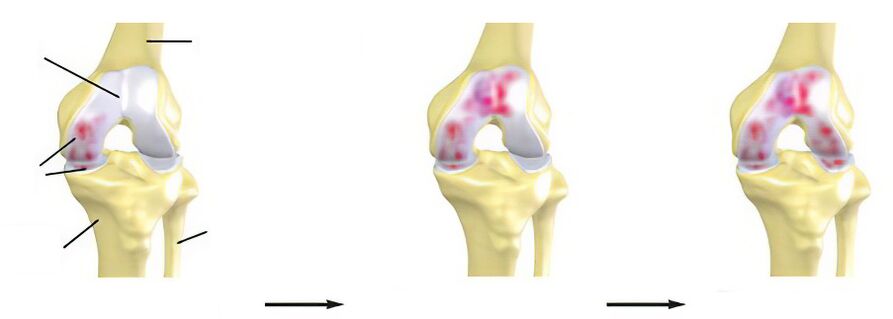
Arthrosis is characterized by degenerative dystrophic changes in the joints that will pursue a person in the form of a chronic disease.The result of such destruction is the defeat of the cartilage joint, the pathological changes in its capsule and the synovial sheath, in ligaments and bone structures.
It is common to distinguish between three degrees of arthrosis, which characterize the different severity of the course of the disease and have different symptoms.
1 degree of arthrosis
In the first stage of the development of arthrosis, no major changes in joint morphology have been observed.Only the composition of the synovial fluid is disturbed.It supplies joint tissue with more nutrients so that cartilage loses its previous resistance to the loads known to it.This leads to the fact that cartilage tissues are inflamed, one has pain.
The patient may complain of insignificant stiffness in the joints, but most often he does not pay any attention to this feeling, attributing such a violation of changes in health over time, uncomfortable posture, etc.
Sometimes in the area of the affected joint you can hear a weak crunchy.The pain can be sick.If the disease is diagnosed at this stage, then it will be possible to deal with conservative methods.
2 degree of arthrosis
The second stage of arthrosis is accompanied by the destruction of cartilage.Bone growths appear at the ends of the joint.The more intensity the load, the more strong the cartilage tissue of the joint is destroyed.
One experiences the constant pain he gets used to.The inflammation is now calming down, and then worsens again.
The muscles around the joints will lose their previous functions, but most often such disorders are weak or moderate.Therefore, at this stage, one may refuse to visit the doctor.
After a short load on the legs, one can experience fatigue.At the same time, joint pain becomes acute.Krista during the movement is strengthened, which is explained by bone growths.
It is in the second degree of development of arthrosis in the joints that the process of deformation begins, so you should definitely seek medical help.
3 degree of arthrosis
The third degree of arthrosis is the most serious.The joint cartilage of the affected becomes not only thinned, but also began to collapse, and the pathological foci are already quite large.The joint is very deformed, which affects the normal axis of the limb.
The ligaments that surround the joint earlier, lose their functional activity, become short, which affects the mobility of the hands or feet.
During this period one has contractures and subluxation.The muscles around the joint are shortened and stretched, they are difficult to contract.It becomes and nearby tissues suffer from insufficient nutrition.
One is tormented by intense pain, is acute and acute.Even at rest, the patient experiences significant discomfort.The third degree of arthrosis is associated with the risk of complete loss of human capacity.
Types of arthrosis
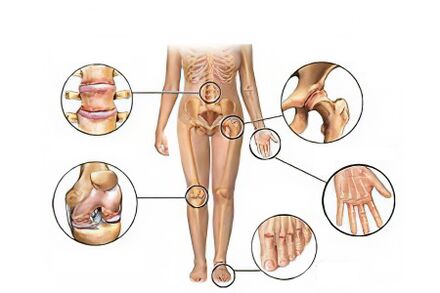
Depending on the cause of arthrosis, there is a disease with unclear etiology, that is, idiopathic arthrosis.Most often it is diagnosed in people over 40 years of age.There is also secondary arthrosis that occurs against the background of obvious causes (after injury, with inflammation of the joints, with endocrine diseases, etc.).
In addition to the fact that arthrosis is classified depending on the cause of its occurrence, the following varieties of the disease are distinguished:
- Knee arthrosis or gonarthrosis.This is the most common type of disease.At the same time, the knee joints suffer.The pathology is most commonly diagnosed in people with excess weight, against the background of metabolic damage to the body, as well as for stress.The disease has developed over the years, at its late stage the knee completely loses its mobility.
- Ankle arthrosis.In this type of disease, the ankle joint is affected.The disease develops against the background of injuries, with stretching of the relationships due to the available dysplasia, gout and diabetes.Sometimes the cause of the pathology is rheumatoid arthritis.Most often, ankle arthrosis is diagnosed in people whose work is related to excessive workloads in this area: in dancers, athletes, in women who wear high collection shoes.
- Shoulder arthrosis.The main cause of the pathology is considered to be congenital defects in the shoulder joint or excessive loads on it.The risk group includes carriers, plasters and people who are busy with hard work.This also includes arthrosis of the elbow joint.
- Hip arthrosis or coxarthrosis.This is one of the difficult varieties of pathology.The main reason is the changes related to age in the joint tissue.The risk group includes people over 40 years of age.
- Cervical arthrosis.The reasons that can lead to the development of this pathology: insufficient mobility of the cervical spine, obesity and injuries.The risk group includes people involved in a sedentary job.In addition to the main symptoms of arthrosis in the form of pain and restriction of joint mobility, patients have dizziness, headache and sometimes even loss of consciousness.This is due to the involvement of the spinal artery in the pathological process that feeds the brain.
- Osteoarthrosis of the hands and fingers.In this case, the wrist wrist is damaged, the joints of the fingers, etc.Most often, women who enter the menopause period suffer from pathology.
- Spondylartrosis in which the joints and cartilage of the spine suffer.The disease develops most often in people after 65 years.Women are mainly suffering from him, which is explained by a decrease in estrogen level after the climax that came.
- In polioaarthrosis.It is a disease of degenerative nature that suffers from the peripheral joints, ligaments and tendons.Spinal joints can participate in the pathology.
Complications of arthrosis
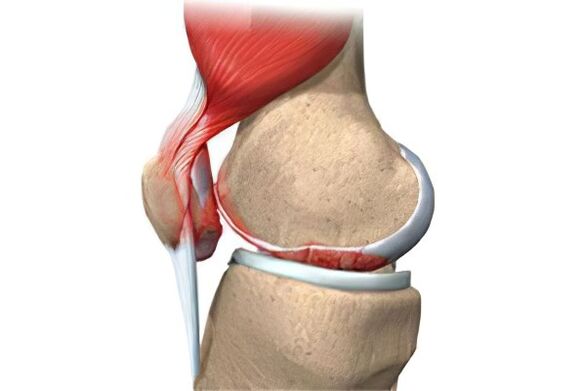
If arthrosis does not provide proper attention, do not treat it on time and properly, it can not only lead to the complete destruction of the patient's joint, but also to a change in the biomechanics of the spine, which may cause the hernias in the intervertebral discs.The complication of joint arthrosis is better not to be allowed.
The following pathologies are distinguished as the main complications of arthrosis:
- Destruction of the joint.
- Deformation of the joint.
- The inability to carry movements.
- Patient damage.
- Disruption of spinal biomechanics and other joints.
- Hernia on intervertebral discs.
- Reducing the patient's living standard.
Diagnosis of arthrosis
In order to diagnose, the doctor should interview and inspect the patient.Then he will appoint him X -ray to the affected joints.
X -ray photos are most often performed in 2 projections.The study allows you to visualize dystrophic tissue changes, cartilage damage and adjacent bones.The articular gap in patients with arthrosis is narrowed, the bone is deformed, bone growth, osteophytes can leave it.Sometimes it becomes stability itself, leading to dislocations.
The first sign of arthrosis, which can be visualized in X -ray, is the presence of osteophytes.First, the ends of the joint surface just become sharp.In the future, they thicken, and then growths and spikes appear on them.The joint gap is already with the advancement of the pathology.
Depending on the resulting radiological picture, the doctor may make the following diagnosis (the classification of the Kelgren-Zheka is taken as a base):
- Arthrosis is doubtful.It is not possible to determine the degree of narrowing of the gap of the joints, but small osteophytes are visible.
- The soft arthrosis in which the osteophytes are well visualized, but there are doubts about narrowing the gap of the joints.
- Moderate arthrosis is diagnosed when the joint gap is clearly narrowed and the osteophytes are clearly visible.Bone deformities are sometimes detected.
- Severe arthrosis is accompanied by a significant narrowing of the joint gap and the formation of large osteophytes.The joint will be deformed.
If the doctor needs more information about the condition of the joint, then he or she may direct the patient to undergo CT, arthroscopy or MRI.To evaluate the quality of the synovial fluid, joint puncture is performed.
Methods of treatment

It is better to treat inflamed joints at an early stage, the treatment itself should be pathogenetic and complex.The essence of treatment is to eliminate the causes that contribute to the development of this disease, it is also necessary to eliminate inflammatory changes and to restore the functions that have been lost earlier.
The overall treatment of arthrosis involves medicines that have anti -inflammatory and analgesic properties, and physiotherapy procedures that have analgesic effects on the joints should also be performed.If the treatment is performed in a spa probe, then it consists in climatic conditions that have a beneficial effect on the joints, as well as in the use of mineral waters and mud.
The treatment of arthrosis is based on several basic principles:
- Damaged joints must be eliminated by excessive loading.If possible, during treatment, it should usually be minimized.
- After the established orthopedic regimen.
- Classes of physiotherapy exercises.
- The passage of physiotherapy, which includes magnet and electrotherapy, shock wave, and laser therapy.
- Sanatorium treatment.To do this, it is necessary once a year, on the recommendation of a doctor, is subjected to the course in specialized resorts.
- Saturation of the joint with oxygen or the so -called joint oxygenotherapy inside.
- Medicine therapy.
- Inside, bone blockade, as well as metrophis decompression.
- A rational approach to nutrition.
Physiotherapy
You can deal with arthrosis using physiotherapy methods of treatment.
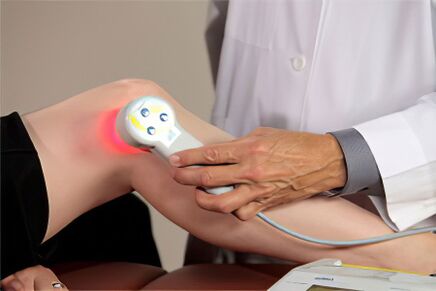
These include:
- UvtSImpact wool therapy allows you to get rid of osteophytes, which are bone processes.They are the main cause of pain.The waves soften these outgrowths and are absorbed after a while.At the same time, the strength of the joint is improved, the metabolic processes are normalized.This procedure is effective only in the early stages of the development of the disease.In addition, only a doctor can appoint it as there are many contraindications.
- MyostimulationSThe method is based on muscle stimulation by electrical impulses.The procedure is shown to treat patients with the bed who are forced to stick to the bed rest after injury.This method is not very often prescribed for arthrosis, although it allows you to normalize blood flow to the problem area and increase muscle tone, which allows you to bring the deadlines for the restoration of the joints.
- PhonophoresisSIn this method of treatment, the joint is exposed to ultrasound waves and medicines.The effect of the drugs is increased as they will be delivered "right to the destination" and the cells will learn them better.
- Ozone therapySThis method involves the introduction of a gas mixture into the joint.The patient disappears, the inflammation decreases, the mobility of the joints normalizes and the blood circulation improves.Treatment is performed in courses.Their duration depends on the severity of the flow of pathology.
Surgical treatment
When it is not possible to deal with the disease with conservative methods, the patient is referred to surgery.
Surgery methods include:
- Implementation of puncture.This is not only a therapeutic but also a diagnostic method.During its application, the needle is inserted into the joint, taking a small amount of fluid.In the future, it is sent for analysis.This method allows you to remove the load from the joint as well as to supply medications to it, for example, corticosteroids.
- ArthroscopySAt the same time, an arthroscope is introduced into the joint, for which several small cuts are made on the skin.This procedure allows to evaluate the condition of the joint inside.During arthroscopy, the doctor can remove unnecessary cartilage, thus delivering a person from pain.
- Near the joint osteotomySThe operation is reduced to the fact that the bones of the joint are slightly cut and fixed in the correct position.This allows you to reduce the load in the lesion area as well as to save a person from pain.Although the procedure is effective enough, they rarely resort to it as it is performed under anesthesia and requires a long recovery period.
- Replacing your own joint with a prosthesisSThe endoprothetics are resorted to if the joint is very deformed and cannot be restored.This is a difficult operation that costs a lot of money.The denture itself is made of materials such as: metal, ceramics, plastic.After the intervention, one recovers for a long time, can suffer from pain.Although it is often impossible to help patients with other methods, otherwise a person may be completely immobilized.The high quality prosthesis is able to last for 20 years.All this time one will not experience movement problems.
Medication
Let's take a closer look at drug treatment:
- Anti -inflammatory drugs.Starting therapy for arthrosis is exhaustive, you can slow down the course of the disease and largely improve the quality of life.It is worth walking more in some points of treatment.In particular, drug therapy includes in the initial stage - this is the elimination of pain, as well as the elimination of inflammatory processes occurring in the joints.
- Hormonal corticosteroids.When arthrosis is in the exacerbation stage, hormonal corticosteroids are recommended.They are placed in the joint.Externally, you can use a special patch, ointment or tincture that is made on the basis of burning pepper.
- Preparations aimed at restoring cartilage and improving the high quality composition of synovial fluid will not be superfluous.The course lasts a fairly long period of time until improvement occurs.
If the case is particularly difficult, then the use of drug analgesics can be prescribed.But they are rarely used when other remedies have not brought the desired effect.
Proper nutrition for arthrosis

Separately, it is worth a walk while eating during the exacerbation of the disease.There are also certain recommendations here - you cannot overeat as this will contribute to the accumulation of extra pounds, but it is impossible to starve as the delivery of cartilage with important elements will be disturbed.The priority task that faces the patient with excess weight is its reduction.To do this, you just need to remove fast carbohydrates from the diet, they are contained in all products and sweets with flour.Alcohol falls under the ban and, first of all, beer.
There are absolutely no complaints about fish dishes - they can be used a lot, of course, in reasonable quantities.But you should not lean on its fat as they have a lot of calories, which means that extra pounds will not be long.
An important role in the treatment of arthrosis is assigned to a cold dish.Surprisingly, it is this dish that it is recommended that all doctors in the diet be included.Such food will be a true warehouse of traces of elements for sore joints.The most important component in this dish is collagen of natural origin.It is absorbed by the body quite quickly and is at the heart of any connective tissue.Due to the regular consumption of jelly, good results can be achieved - the joints will become more mobile, the tissues lining their tissues - elastic, and cartilage and bones will gain strength.
Do not forget about the regular intake of vitamins with food.For patients with arthrosis vitamins are particularly suitable
Pyridoxine will help the production of hemoglobin."You can get it ”by eating bananas, nuts, cabbage and potatoes. It is worth fascinated by greenery and legumes. They will become a source of folic acid. The liver, mushrooms, dairy products and eggs will be useful. They are rich in riboflavin.
Observing the treatment regimen prescribed by the doctor, it can be achieved that the disease will withdraw and the damaged tissues will begin to recover.



















